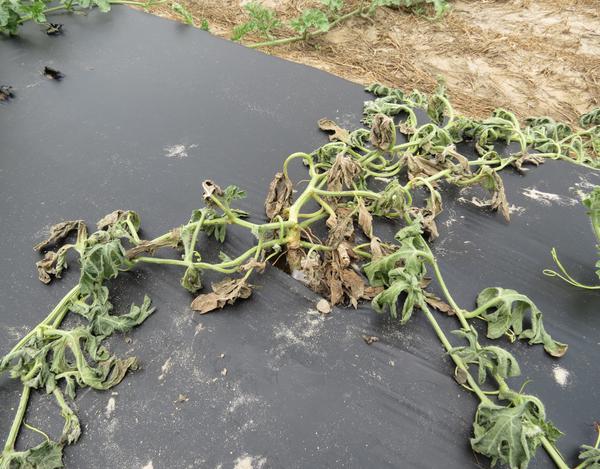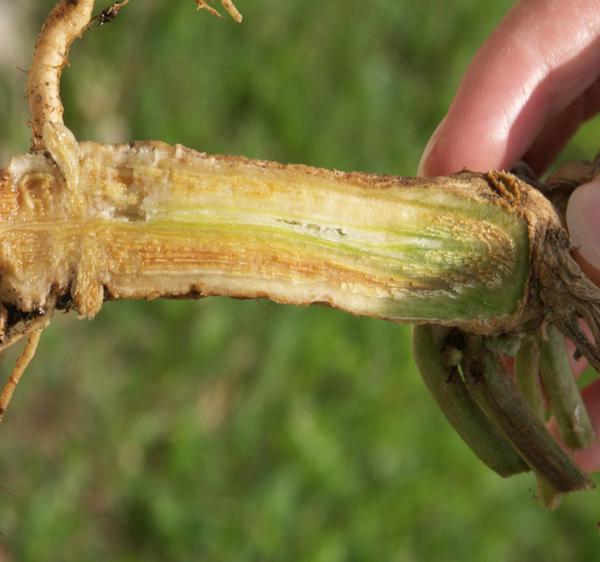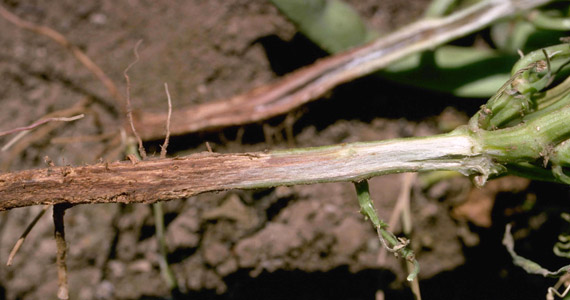
Fusariosis
Fusarium Oxysporum F.Sp. Cucumrinum
Pathogen:
Fungus
Type:
Risk:
HIGH





DESCRIPTION
Pathogen description
Fusarium wilt is a fungal disease caused by different species of the genus Fusarium, which affects a wide range of plants, including cucurbits. This pathogen can survive in soil for long periods of time and can enter plants through wounds in roots or stems, or by germination of spores under favorable conditions.
Disease description
In cucurbits, fusariosis causes symptoms such as sudden wilting of the plant, yellowing and necrosis of the leaves, as well as the decomposition of the internal tissues of the stems and fruits. These symptoms can appear gradually and progress rapidly, eventually leading to the death of the plant if the disease is not controlled in time.

TEMPERATURE AND HUMIDITY
25°C - 30°C
70% - 90%

VOIES DE TRANSMISSION
Contaminated soil, infected seeds, crop remains, contaminated irrigation water, agricultural tools, transportation of infected plants.

Chemical treatments
CONTROL
• AZOXISTROBIN 12% + TEBUCONAZOLE 20% [SC] P/V
• AZOXISTROBIN 25% [SC] P/V
• CIPRODINIL 37.5% + FLUDIOXONIL 25% [WG] P/P
• TEBUCONAZOLE 25% [EW] P/V
Treatments authorized in organic farming
-
Biological control
• BACILLUS AMYLOLIQUEFACIENS subsp. plantarum (strain D747) 5% [SC] P/V
• BACILLUS SUBTILIS (STRAIN QST 713) 1.34% [SC] P/V
• TRICHODERMA ASPERELLUM (STRAIN T25) (1X10E8 CFU/G) 0.5% + TRICHODERMA ATROVIRIDE (STRAIN T11) (1X10E8 CFU/G) 0.5% [WG] P/P
• TRICHODERMA ASPERELLUM (STRAIN T34) 12% (1.0 x 10E12 cfu/kg) [WP] P/P
Preventive treatments
• AZOXISTROBIN 12% + TEBUCONAZOLE 20% [SC] P/V
• AZOXISTROBIN 25% [SC] P/V
• BACILLUS AMYLOLIQUEFACIENS subsp. plantarum (strain D747) 5% [SC] P/V
• BACILLUS SUBTILIS (STRAIN QST 713) 1.34% [SC] P/V
• CIPRODINIL 37.5% + FLUDIOXONIL 25% [WG] P/P
• TEBUCONAZOLE 25% [EW] P/V
• TRICHODERMA ASPERELLUM (STRAIN T25) (1X10E8 CFU/G) 0.5% + TRICHODERMA ATROVIRIDE (STRAIN T11) (1X10E8 CFU/G) 0.5% [WG] P/P
• TRICHODERMA ASPERELLUM (STRAIN T34) 12% (1.0 x 10E12 cfu/kg) [WP] P/P
To prevent fusariosis in cucurbit crops, it is important to practice crop rotation and avoid monoculture, as this can reduce the accumulation of pathogens in the soil. In addition, it is recommended to maintain a good soil structure and adequate drainage to avoid waterlogging, which favors the development of Fusarium. It is also useful to use resistant varieties when possible and avoid planting in soil contaminated with the pathogen.
Recommendations
*The recommended treatments are recommendations based on the authorities' databases and do not replace in any way the guidelines established by the legislation of each country.





